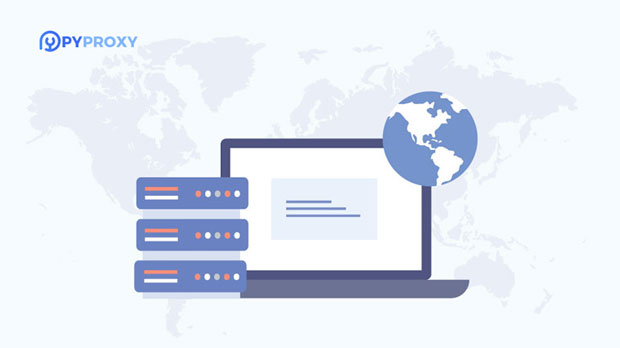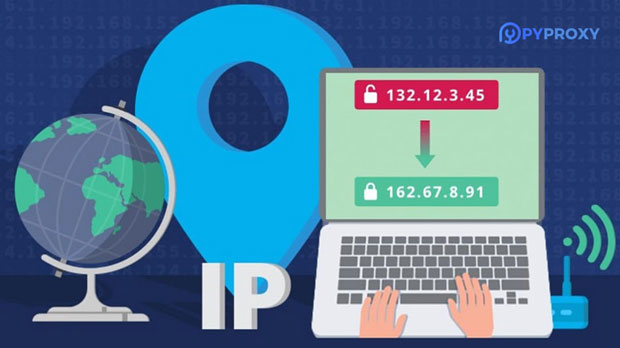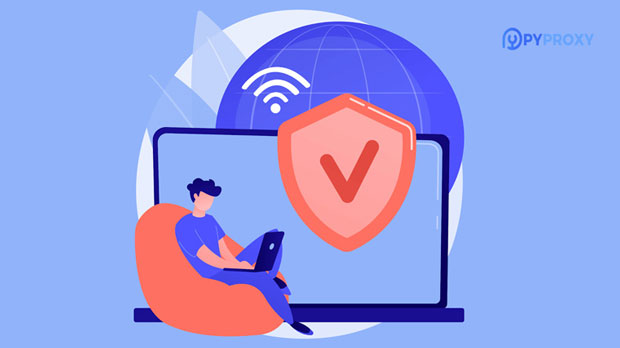In the world of e-commerce, the need for monitoring competitors, tracking pricing strategies, and ensuring smooth transactions has become increasingly vital. To achieve these goals, companies often rely on proxies to scrape data, maintain anonymity, and bypass geographical restrictions. Pyproxy and Royal residential proxies are two popular proxy solutions in this field. In this article, we will compare the performance, advantages, and limitations of these two proxy types in e-commerce monitoring, helping businesses choose the most effective solution for their needs. Introduction to Pyproxy and Royal Residential ProxiesProxies serve as intermediaries between the user and the internet, offering the ability to mask a user's IP address and appear as though they are accessing a website from a different location. This capability is particularly valuable in e-commerce monitoring, where businesses need to gather data from various websites without being blocked or detected. Among the numerous proxy services available, Pyproxy and Royal Residential Proxies stand out as two powerful options.Pyproxy provides proxy services utilizing a large pool of residential IP addresses, making it difficult for websites to detect scraping activities. Royal Residential Proxies, on the other hand, offers premium proxy solutions that guarantee high anonymity and reliable connections.Key Features and FunctionalityPyproxyPyproxy provides access to a vast network of residential IP addresses. These IPs are real, geographically diverse, and are part of the home network of residential users. This network allows users to avoid detection by websites that might otherwise block or flag proxy traffic. Some key features include:- Wide Geographic Coverage: Pyproxy has a large range of residential IPs from across the globe, allowing businesses to monitor e-commerce sites in various regions.- High Anonymity: The use of residential IPs ensures that Pyproxy users can remain anonymous, reducing the risk of detection.- Scalability: Pyproxy offers flexible subscription plans, catering to businesses of different sizes.- Support for Multiple Protocols: It supports HTTP, HTTPS, and SOCKS5, ensuring compatibility with various types of e-commerce monitoring tools.Royal Residential ProxiesRoyal Residential Proxies focuses on offering premium proxy services with high reliability and speed. Their proxies are also based on residential IPs, but the focus is on ensuring a stable, high-performance service for businesses that require constant and large-scale data scraping. Some key features include:- Premium IPs: Royal Residential Proxies offers high-quality residential IPs with a focus on speed and uptime, which is essential for e-commerce monitoring.- Real-Time Rotation: The proxies rotate in real time, providing businesses with continuous access without risking IP bans or throttling.- Dedicated Support: Royal provides 24/7 customer support for troubleshooting and ensuring smooth operations.- Advanced Geo-targeting: Businesses can target specific regions and cities with pinpoint accuracy, which is crucial for regional price comparisons and market analysis.Performance in E-commerce MonitoringIn the context of e-commerce monitoring, performance is key. Businesses need to continuously collect pricing data, monitor inventory levels, and analyze competitor activities. Both Pyproxy and Royal Residential Proxies offer distinct advantages when it comes to performance, but each has its strengths and limitations.Pyproxy in E-commerce MonitoringPyproxy’s diverse pool of residential IPs offers excellent coverage across different regions, making it highly effective for businesses involved in global e-commerce. The vast network helps avoid detection, ensuring that businesses can monitor competitors’ websites without getting blocked. However, one challenge businesses may face is the potential inconsistency in connection speeds due to the large number of shared residential IPs. While Pyproxy is reliable for low to moderate-scale monitoring tasks, businesses dealing with high-frequency, high-volume scraping might experience some delays or throttling.Royal Residential Proxies in E-commerce MonitoringRoyal Residential Proxies shines in terms of performance. Its premium residential IPs are optimized for high-speed, low-latency connections, making them ideal for businesses that need real-time data. The continuous rotation of IPs ensures that businesses can avoid being blocked or detected, even with large-scale scraping. The real-time rotation also means that businesses can gather data from multiple competitors simultaneously, a feature crucial for price tracking and inventory monitoring. However, the premium nature of Royal’s proxies comes with a higher price tag, which may not be suitable for smaller businesses with budget constraints.Pricing and ScalabilityPyproxy PricingPyproxy’s pricing model is flexible, allowing businesses to choose a plan that best suits their needs. It provides access to a large pool of residential IPs at a relatively affordable price, making it an attractive option for small to medium-sized e-commerce businesses. However, for businesses that need high-speed connections or large volumes of data, the service may fall short. The scalability of Pyproxy is solid, but users may experience limited access to premium features without higher-tier plans.Royal Residential Proxies PricingRoyal Residential Proxies offers a premium service, which is reflected in its pricing. While it is on the higher end of the price spectrum, businesses that require high-speed, large-scale scraping operations will find the investment worthwhile. The premium pricing ensures that users receive top-tier proxies with minimal downtime, fast connections, and real-time IP rotation. Royal’s service is ideal for large e-commerce enterprises that need continuous, uninterrupted monitoring. However, smaller businesses might find the cost prohibitive unless they require a high volume of data.Customer Support and ReliabilityPyproxy SupportPyproxy offers responsive customer support, ensuring that businesses can resolve issues efficiently. The platform provides email and ticket-based support, and there are resources available for troubleshooting common issues. While Pyproxy’s support is effective for standard inquiries, businesses requiring immediate assistance may find response times slower compared to premium services like Royal.Royal Residential Proxies SupportRoyal Residential Proxies excels in customer service. They offer 24/7 support with a dedicated team to handle issues related to connectivity, IP bans, and proxy performance. This level of support is ideal for businesses that rely on proxies for real-time data collection. The availability of premium support ensures that businesses can resolve issues quickly, minimizing downtime and ensuring that e-commerce monitoring runs smoothly.Conclusion: Which Proxy Service is Best for E-commerce Monitoring?Both Pyproxy and Royal Residential Proxies offer valuable solutions for e-commerce monitoring, but their performance varies depending on the scale and requirements of the business.- Pyproxy is best suited for small to medium-sized businesses that need a cost-effective solution for e-commerce monitoring. Its extensive pool of residential IPs makes it highly suitable for global e-commerce, but businesses must be prepared for potential speed inconsistencies with large-scale scraping.- Royal Residential Proxies, on the other hand, is ideal for large enterprises that require high-speed, uninterrupted data collection. The premium service ensures fast connections, real-time IP rotation, and reliable customer support, but it comes at a higher cost.In conclusion, businesses should consider their budget, scalability requirements, and the volume of data they need to scrape when choosing between Pyproxy and Royal Residential Proxies. Each proxy service offers distinct advantages, and the choice will ultimately depend on the specific needs of the e-commerce operation.
Sep 29, 2025



































































